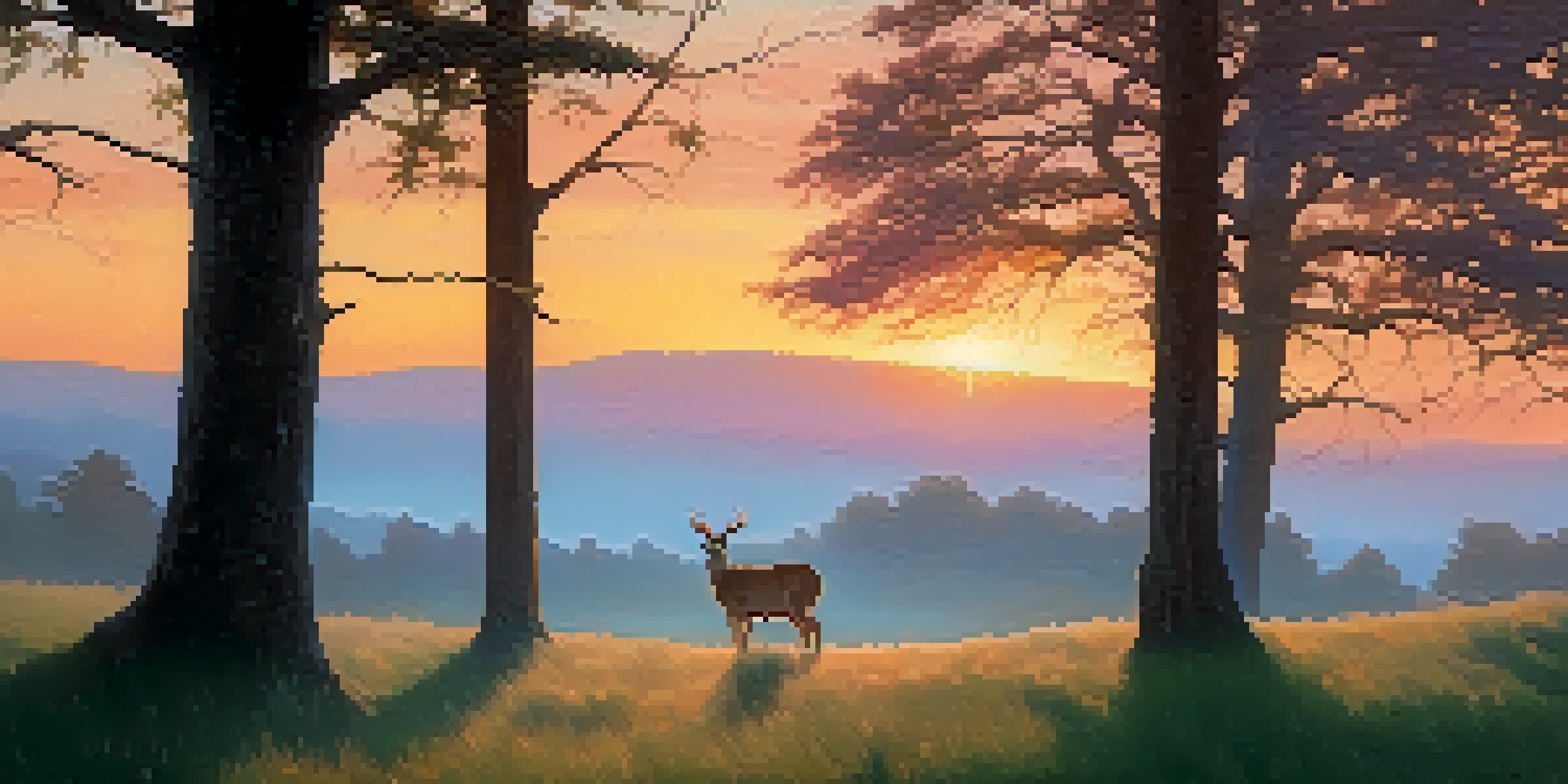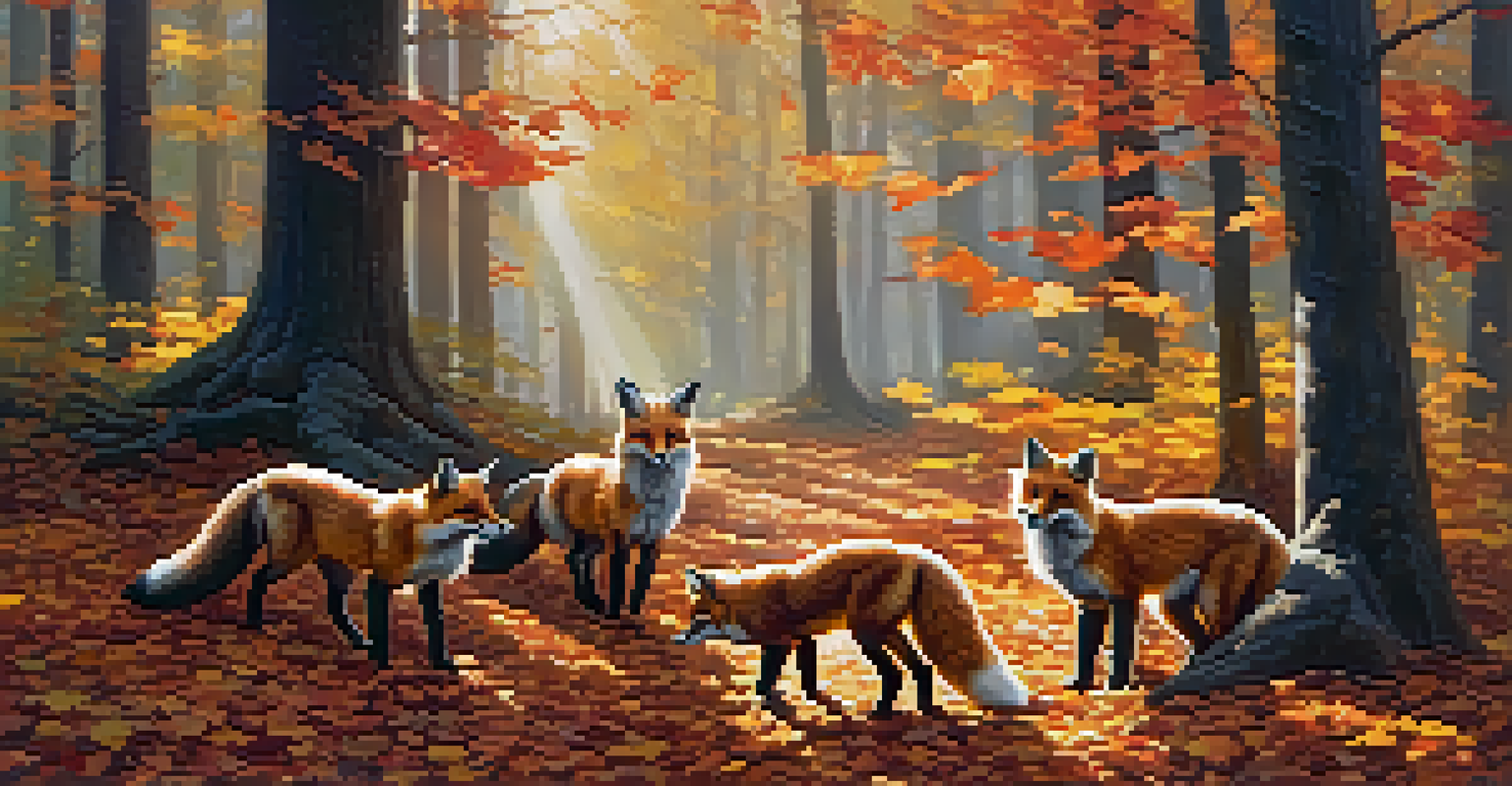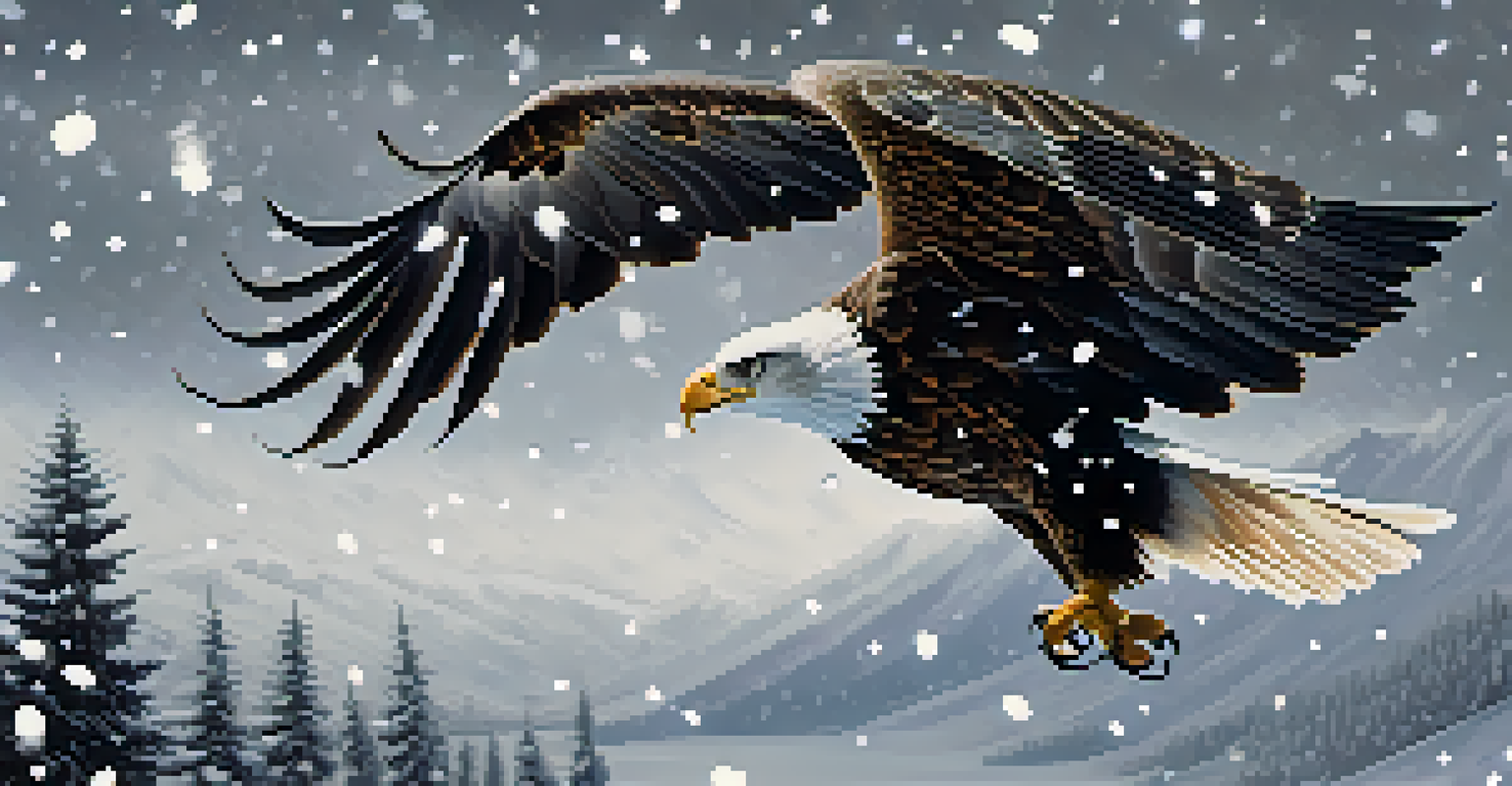Timing Your Photography Trips for Perfect Wildlife Shots

Understanding Wildlife Activity Patterns for Better Shots
Every photographer knows that timing is crucial, especially when it comes to wildlife. Animals tend to be most active during specific times of the day, often referred to as the 'golden hours'—early morning and late afternoon. This is when the light is soft and warm, making it perfect for capturing stunning images.
In every walk with nature one receives far more than he seeks.
For instance, many birds are early risers, and you’ll often find them feeding at dawn. Similarly, larger mammals like deer and elephants are more likely to be spotted during these cooler parts of the day. By planning your trips around these activity patterns, you increase your chances of getting that perfect shot.
Additionally, understanding seasonal behaviors can enhance your experience. During mating seasons, animals may display unique behaviors that make for extraordinary photographs. By aligning your plans with these natural rhythms, you’re setting yourself up for success.
Choosing the Right Season for Wildlife Photography
The season can significantly influence wildlife visibility and behavior. For example, winter months may bring migratory birds into certain areas, while summer often sees animals active in lush environments. By choosing the right season, you can tailor your photography trips to capture specific wildlife that thrives during that time.

Moreover, different seasons can provide varying backdrops for your images. Spring blossoms, summer greens, autumn hues, and winter snows each create a unique canvas. This not only enhances your photographs but also tells a rich story about the habitat and the creatures living within it.
Timing is Key for Wildlife Photos
Capturing stunning wildlife images depends on understanding the activity patterns of animals, especially during the 'golden hours' of early morning and late afternoon.
Keep in mind that some regions have peak wildlife viewing periods, so do your research ahead of time. National parks and wildlife reserves often share this information, helping you plan trips when animals are most likely to be seen.
Utilizing Weather Conditions for Captivating Images
Weather can play a crucial role in wildlife photography, sometimes enhancing the mood of your shots. Overcast days can be ideal for capturing vibrant colors without harsh shadows, while misty mornings add an ethereal quality to your images. Understanding how to adapt to different weather conditions can make your photos stand out.
Photography is the story I fail to put into words.
For instance, rainy weather often brings animals out of hiding, as they feel more secure with the cover it provides. This could be the perfect opportunity to capture unique behaviors, like animals shaking off water or engaging in playful activities. Always be prepared to embrace the unexpected!
Additionally, certain weather events, like storms, can create dramatic skies that serve as stunning backdrops. By timing your trips to coincide with these dynamic conditions, you’re not just capturing wildlife but also the beauty of nature itself.
Planning Your Trip Around Local Wildlife Events
Many regions host local wildlife events, such as migrations or breeding seasons, that offer exceptional photography opportunities. For example, the annual monarch butterfly migration is a breathtaking sight that draws photographers worldwide. Knowing about these occurrences allows you to plan a trip that maximizes your chances of capturing awe-inspiring moments.
Additionally, some locations offer guided tours during peak seasons, where experts can lead you to the best spots. These guided experiences not only save time but also increase your chances of seeing elusive animals. It’s a win-win for any wildlife photographer!
Seasons Shape Wildlife Behavior
Choosing the right season for your photography trips can significantly enhance your chances of encountering specific wildlife and capturing unique environmental backdrops.
To stay updated, consider following wildlife conservation organizations or local park services. They often post schedules and tips about wildlife events, which can be invaluable in planning your trips.
Understanding the Importance of Patience in Wildlife Photography
Patience is one of the most valuable virtues in wildlife photography. Often, you may find yourself waiting for long periods, sometimes hours, for the perfect moment to arrive. This anticipation can be frustrating, but it’s essential for capturing those once-in-a-lifetime shots.
The key is to remain observant and engaged during your wait. Sometimes, the most unexpected scenes unfold when you least expect them. By immersing yourself in the environment and being patient, you open yourself up to surprises that could lead to breathtaking photographs.
Remember, the wildlife is unpredictable, and being flexible with your plans can lead to unexpected rewards. Embrace the stillness, and let the wildlife come to you—your patience will surely pay off.
Using Technology to Enhance Your Wildlife Photography Experience
In today’s digital age, technology can significantly enhance your wildlife photography trips. From smartphone apps that track animal movements to weather forecasting tools, there are plenty of resources available to help you plan your outings more effectively. Utilizing these tools can give you a competitive edge when it comes to timing your shots.
For instance, apps like iNaturalist or Merlin Bird ID can help you identify species and track their behaviors in real-time. This technology not only increases your knowledge but can also lead you to hidden gems in the wild. The more informed you are, the better your chances of capturing that perfect moment.
Patience Yields Better Photography
Practicing patience in wildlife photography allows you to observe and capture unexpected moments that can lead to breathtaking shots.
Additionally, investing in good camera equipment with fast autofocus and high ISO capabilities can make a world of difference. These pieces of technology allow you to capture crisp images in lower light conditions, which is often when wildlife is most active.
Reflecting on Your Experiences to Improve Future Trips
After each photography trip, it's beneficial to reflect on your experiences. What worked well? What would you do differently next time? Taking the time to analyze your outings not only helps you grow as a photographer but can also improve your future wildlife adventures.
Consider keeping a journal or a blog to document your trips. Include details about the weather, the wildlife you encountered, and the techniques you used. This reflective practice can help you identify patterns and preferences, making your future planning more effective.

Moreover, sharing your experiences with fellow photographers can provide new insights and tips. Engaging with a community can spark inspiration and open up opportunities for collaboration on future trips.